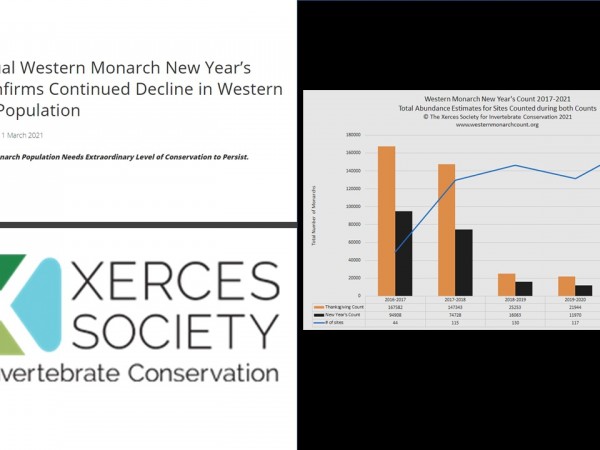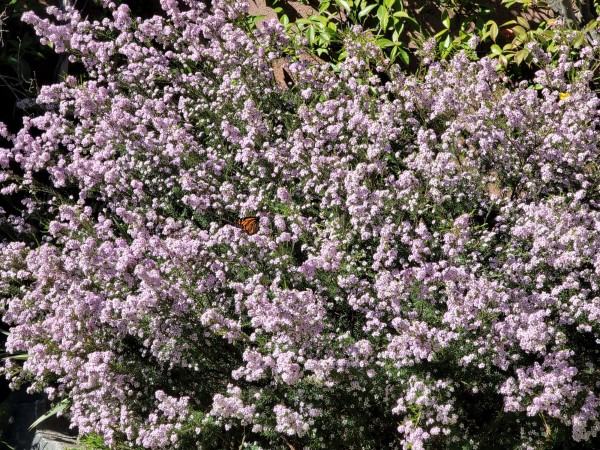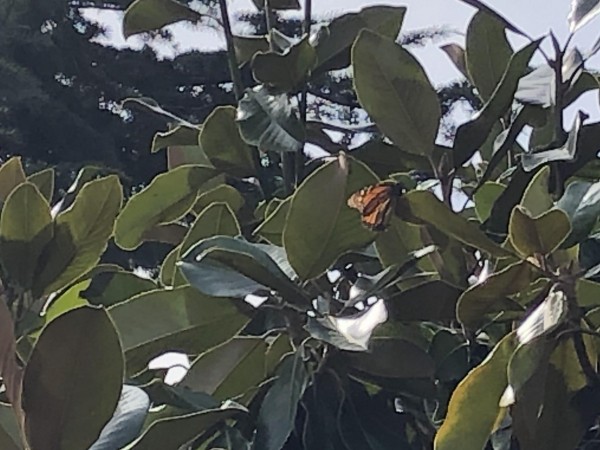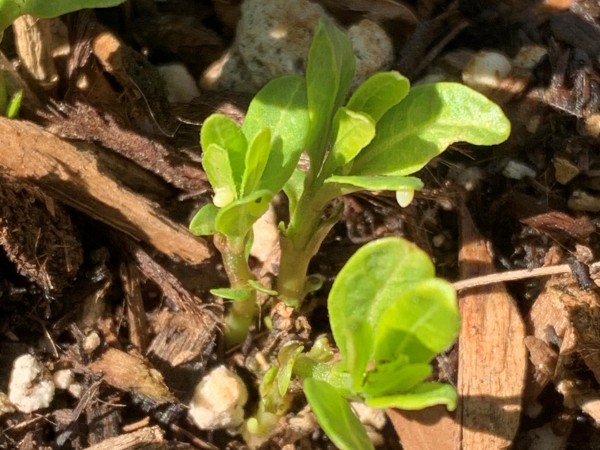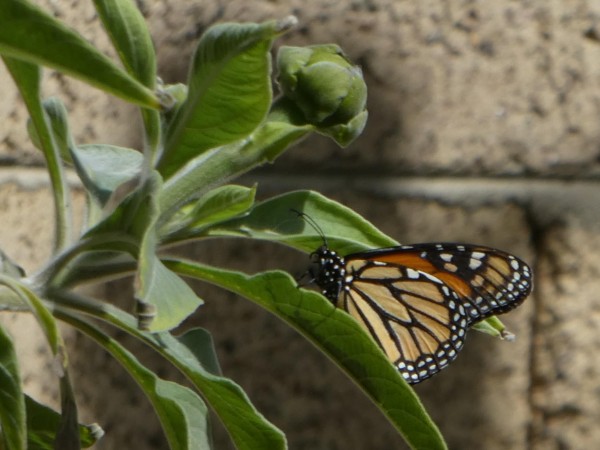Letter from Gail Morris: Western Monarch Spring Report #2
Published: 03/10/2021
Dear Western Monarch friends,
Last week The Xerces Society released the results of the 2020-21 Western Monarchs New Year’s Counts. Dedicated volunteers counted monarchs at 149 sites and found only 1,039 monarchs. You can read more information about the final count numbers on Xerces Society Western Monarch Count: Results from the 2020-2021 Western Monarch New Year’s Count are now available!
Warm and breezy weather this week in portions of California brought new “first sightings” of monarchs along the coast and “first eggs” reports as well. Meanwhile monarchs danced in the desert warmth in southern Arizona looking for mates. But a low pressure system hovering over the Pacific coast will move into California and the Southwest this week. Its high winds, chilling temperatures and possible rain will slow monarch activity. When conditions improve, flowers will be in bloom and milkweed will be ready for monarchs.
Western Sightings
California
Monarchs are beginning to spread through coastal California as they expand their range this Spring. Steve in Long Beach saw his first “solo” monarch of the season on March 2.
Stephanie saw her first one as well in Fallbrook on the same day visiting flowers. “Seen on De La Mina Verbena.”
Fruit trees in bloom are good nectar resources for monarchs as Terry in Oakland observed the following day. “Nectaring on a plum tree.”
Not only are monarchs appearing—so are new eggs! Constance in Brea found the first eggs of the season, “Found 15 eggs today.” Meanwhile Joyce in Mountainview found 22 eggs on March 1. “First eggs of the season on our native milkweeds that just sprouted. A few days ago there was a female monarch in the garden. We have had monarchs in our area all winter so some never migrated to the coast. It's been a very mild winter here. No reason to leave perhaps.”
Arizona
Arizona also saw monarchs visiting home gardens on the warmer days in the lower deserts. Last week I mentioned several monarchs visited my yard for the first time this spring. A male monarch has been here each morning for the last four days from a neighbor’s tree where he spends the night. He flies circles around the yard over the milkweed and flowers, occasionally stopping to nectar or rest in a tall nearby shrub only to begin the pattern again. His repetitive behavior looks like he is hoping a female will stop by. Another male stopped by two days ago, but was promptly chased away. We’ll see how long he stays around.
Lynne reported on March 9: “Today, in Tempe, at Sellah Park, I watched a monarch flitting around. There are pollinators gardens around a pond. There are desert milkweeds, Asclepias subulata, in most of the sections, one to three. They aren’t blooming right now, but other plants are. It was there for quite awhile. It was visiting the different gardens. I was walking around the pond with my dog, when I spotted it. I never was able to take a picture or make a video.
Wanted: Worn Wing Monarchs
Monarchs on their spring migration are expanding their range as temperatures warm. If you can, try to note and report their wing condition. We always welcome new monarchs—they are beautiful to behold and photo favorites. But this time of year, recording worn, frayed monarchs is especially important. Their aged appearance may reflect their long life overwintering. They are now re-migrants moving through our landscapes on their journey to the breeding grounds to mate and lay eggs. Remember these re-migrants eclosed late last summer and their age shows on their wings. Let us know what you see in the field! (Photo of worn vs new wings.)
Reports needed!
Is milkweed up yet where you live? Is it budding or flowering? Take a photo and let us know. Milkweed is crucial to breeding monarchs on the Spring migration. Your reports can help everyone know the “status of the breeding habitat” where you live. Don’t forget to report any monarchs you may be lucky enough to see! Do their wings look fresh and new or worn? A photo from your phone or camera can help us all see the progress early monarchs are now making in the spring movement.
Gail Morris is the Coordinator of the Southwest Monarch Study (www.swmonarchs.org), a Monarch Watch Conservation Specialist, and the Vice President of the Monarch Butterfly Fund and the Central Arizona Butterfly Association. The Western Monarch Population News is based on comments provided to Gail Morris. We hope to increase the number of sightings and therefore photos and comments entered into the Journey North. We rely on the volunteers who communicate regularly with Gail and who agree to participate in our effort to increase awareness of the population of western Monarchs. You can reach her at gail@swmonarchs.org.
